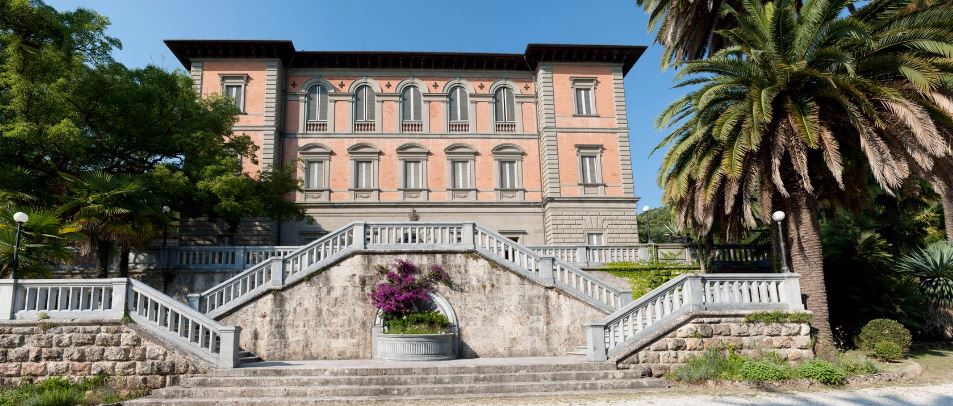On the northern coast of Tuscany, the area of Versilia has long been known for its beautiful beaches, recreation, and elegance. Viareggio went from being a small fishing village to a touristy seaside resort in the early nineteenth century. Fortunately, many historical buildings remain from this period such as Villa Borbone between Viareggio and Torre del Lago and Villa Paolina I Borboni, who were dukes of Lucca from 1815 to 1847.

In addition to Villa Borbone, Villa Capezzano Pianore was built in the hills of Camaiore where the last Empress of Austria, Zita, was born. In 1819, the Duchess of Lucca, Maria Luisa Borbone, purchased the pine forest and the adjacent land between Viareggio and Torre del Lago for a hunting estate. In 1821, she commissioned Lorenzo Nottolini, a court architect to build a hunting lodge consisting of three separate buildings. The villa belonged to the Borbone family until 1885 when Margherita Borbone sold it to Benvenuto Barsanti. He donated it to the town of Viareggio which, after years of neglect, restored it. The villa was at its finest from 1871 to 1893, when Margherita settled there with her husband Carlo Maria of Spain with a small court of 36 people.
During their stay, they built a monumental staircase and had the rooms frescoed. The villa was seriously damaged during the Second World War when it became first a German then, an American command. On Viale dei Tigli, visitors can enter through the large gate and into the English garden in front of the villa. Currently, the villa looks as if it is one massive building. rather than three separate ones. On the first floor, the rooms with frescoed ceilings and beautiful floors have returned to their original splendor.
All the rooms, after years of neglect, have been newly furnished with period furniture from other Borbone villas. The villa with the attached estate was a small autonomous citadel, equipped with stables, a kitchen, and the fieldworkers’ houses. Adjacent to the villa is the San Carlo Borromeo Chapel built by Duke Carlo III and destined to be the burial ground of the family. The white marble tombs of Charles III, Duke of Lucca and of Parma and Piacenza, and his son Roberto are here. The villa also houses one of the visitor centers of San Rossore Park and the Maria Luisa di Borbone Academy.

The other historic villa in Viareggio is located in Piazza Shelley. Paolina Bonaparte, Napoleon’s sister, wanted the villa built in this location because it was where the sea returned the body of the poet Shelley, who died in a shipwreck. The Duchess Maria Luisa Borbone granted Paolina a large piece of land outside the center of Viareggio, including the beach and pine forest corresponding to the stretch between via Matteotti and via Mazzini. The villa, also known as the “Refuge of Venus”, was inhabited by the princess after its construction for a few years. After Paolina’s death, the building passed to her sister Carolina Murat. After being purchased by the municipality, the villa was used as the seat of several schools, and currently, after a long restoration, it houses the civic museums of Villa Paolina (Alberto Carlo Blanc Archaeological Museum and the Giovanni Giuffreda Museum of musical instruments).
The building was built by the architect Giovanni Lazzerini in the French neoclassical style and is surrounded by a large garden. The facade facing the sea is composed of a terrace supported by a neoclassical colonnade. The Carducci Classical High School was built in the garden area in the early 1900s. Inside the Paolina Villa, Paolina’s private apartment has been restored to its original splendor. The rooms on the ground floor are decorated in Pompeian style while the rooms on the upper floor are in neoclassical style. One of the most beautiful rooms is the dining room which was frescoed to resemble that of the Ducal Palace of Lucca. On the ground floor, the Alberto Carlo Blanc Archaeological Museum was founded in 1974 and houses a rich collection of prehistoric findings from north-western Tuscany. The other museum houses Giovanni Giuffreda’s collection of 400 musical instruments from different countries around the world ranging from the 17th century to the present day.
Photo 1 credit: storico.org
Photo 2 credit: laversilia.it
Photo 3 credit: bellezzedellatoscana.it


